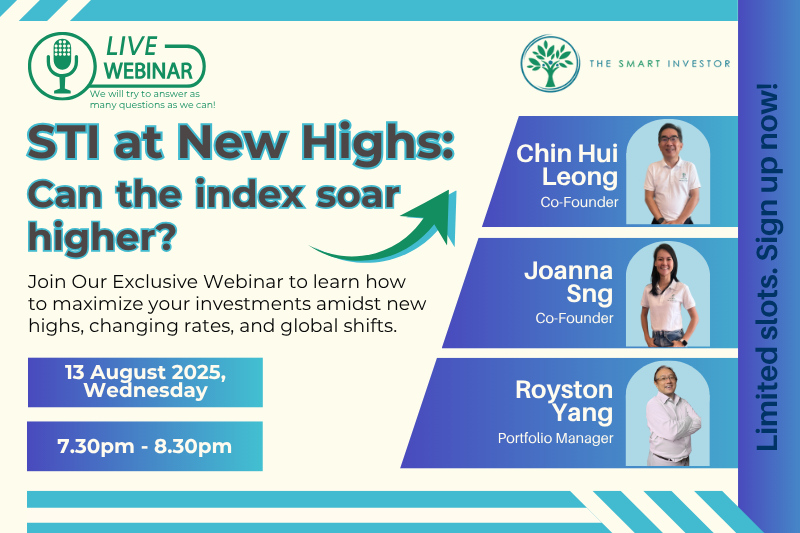Not all local companies choose to list on the Singapore Exchange (SGX: S68).
Some may seek to list on other bourses because of their business models, which could be more appreciated in other countries.
Other reasons could include valuations and liquidity.
That said, such companies could also demonstrate solid growth prospects despite being listed on a foreign stock exchange.
Here are three Singapore-based growth stocks that are listed in the US.
Sea Limited (NYSE: SE)
Sea Limited is a technology and e-commerce company with three main divisions.
The gaming division is parked under the Garena brand, e-commerce under the Shopee brand, and digital financial services under Monee.
The company reported strong growth with improving profitability across all three divisions.
Revenue climbed 29.6% year on year to US$4.8 billion, with operating profit soaring more than sixfold year on year to US$456.4 million.
Net profit came in at US$403 million, reversing the previous year’s net loss of US$23.7 million.
The business also generated operating cash flow of US$757 million for 1Q 2025, 61.6% higher than the prior year’s quarter.
Garena saw its quarterly active users rise 11.3% year on year to 661.8 million for the quarter.
The more important metric, quarterly paying users, surged 33% year on year to 64.8 million.
Sea Limited’s Free Fire continues to be the world’s largest mobile game by daily average users and downloads.
Over at Shopee, gross merchandise value (GMV) climbed 21.2% year on year to US$28.6 billion, led by a 19.2% year-on-year increase in gross orders to 3.1 billion.
Average monthly buyers on the e-commerce platform grew by 15% year on year during the quarter.
Monee also reported encouraging statistics with the loan principal growing by 75% year on year in 1Q 2025 to US$5.8 billion.
More than four million first-time borrowers were added in 1Q 2025, and management is confident of achieving loan book growth faster than Shopee’s GMV growth rate.
With all three cylinders firing, Sea Limited looks set to continue doing well in the quarters ahead.
Flex Ltd (NASDAQ: FLEX)
Flex, previously known as Flextronics, designs, engineers, and delivers logistical and manufacturing solutions for customers at around 100 sites in approximately 30 countries.
The company hires more than 140,000 employees globally.
Flex delivered a mixed set of results for its fiscal 2025 (FY2025) ending 31 March 2025.
Sales dipped by 2.3% year on year to US$25.8 billion, but operating profit surged 37% year on year to US$1.17 billion.
Net profit, however, dipped by 3.9% year on year to US$838 million, but this was because of a significant tax credit booked in FY2024.
Profit before tax climbed nearly 54% year on year to US$1 billion.
The business generated a healthy positive free cash flow of US$1.1 billion for FY2025, up 34% year on year.
For FY2026, Flex expects revenue to be in the range of US$25 billion to US$26.8 billion.
Importantly, the business has strong contractual protection to enable tariff pass-throughs.
Last month, Flex’s critical power business, Anord Mardix, significantly expanded its European operations to enhance its data centre offerings.
The company acquired a new manufacturing site in Poland and doubled its power product capacity in Europe to 1.2 million square feet.
Earlier this month, Flex joined forces with the Massachusetts Institute of Technology (MIT) on a new initiative for New Manufacturing, which seeks to drive innovation through advanced technologies and strengthen US manufacturing competitiveness.
Grab Holdings (NASDAQ: GRAB)
Grab owns a superapp that provides ride-hailing, food delivery, and financial services, among others.
Founded in 2012, the company is now Southeast Asia’s largest superapp that helps connect millions of people to millions of drivers, merchants, and businesses.
Revenue for 1Q 2025 rose 18.4% year on year to US$773 million.
Gross profit improved by 25.1% year on year to US$324 million, with gross margin rising from 39.7% to 41.9%.
The business also churned out a positive free cash flow of US$47 million, reversing the negative free cash flow of US$25 million in the previous year.
Grab saw healthy traction for its annual and monthly transacting users (MTUs) since 1Q 2023.
Annual transacting users grew from 88 million to 119 million while MTUs increased from 33 million to 45 million over the same period.
Its Deliveries division saw revenue rise 18% year on year to US$415 million while GMV climbed 16% year on year to US$3.1 billion.
The mobility division also saw healthy growth with revenue rising 15% year on year to US$282 million.
GMV for this division climbed 17% year on year to US$1.8 billion.
Its Financial Services division, while small, also saw encouraging financial and operating statistics.
Revenue surged 36% year on year to US$75 million, and its loan portfolio soared 56% year on year to US$566 million.
Grab projects revenue of between US$3.33 billion to US$3.4 billion for 2025, representing year-on-year growth of 19% to 22%.
Dive into the future of technology with our newest FREE report, “The Rise of Titans.” Discover how the big 7 US tech stocks can be your ticket to huge long-term gains. Download your copy today and see how easy it is to supercharge your portfolio.
Follow us on Facebook, Instagram and Telegram for the latest investing news and analyses!
Disclosure: Royston Yang owns shares of the Singapore Exchange.






